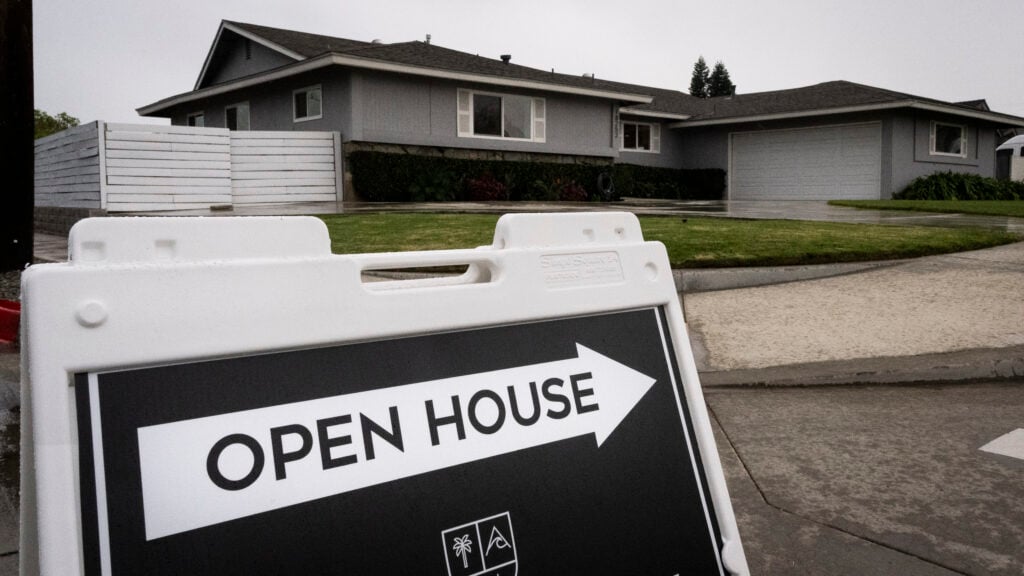
Whether it’s refining your business model, mastering new technologies, or discovering strategies to capitalize on the next market surge, Inman Connect New York will prepare you to take bold steps forward. The Next Chapter is about to begin. Be part of it. Join us and thousands of real estate leaders Jan. 22-24, 2025.
This year is shaping up to be the slowest year for sales of existing homes in nearly 30 years, with falling mortgage rates not expected to have an impact on sales until next year, Fannie Mae economists said in their latest housing forecast this week.
Nationally, listings are up more than 20 percent from a year ago. But the dramatic increase in home prices seen during the pandemic continues to pose affordability challenges for buyers in many markets, Fannie Mae forecasters said.
TAKE THE INMAN INTEL INDEX SURVEY FOR SEPTEMBER
Real estate agents like to remind their clients that all housing is local, and Fannie Mae economists do see considerable regional variation in listing supply.
The most dramatic increases in for-sale inventories have been in the Sun Belt and Mountain West regions, but “at the national level the supply shortage very much applies,” Fannie Mae Chief Economist Doug Duncan said in a statement.
And while listings are trending up strongly in parts of the South and West, Fannie Mae economists think “some combination of easing mortgage rates and soft home price growth relative to income growth in these regions will be needed before existing home sales begin to meaningfully rise.”
The day after Fannie Mae issued its forecast, the National Association of Realtors reported that existing-home sales declined 4.2 percent from a year ago in August, to a seasonally adjusted annual pace of 3.86 million sales.
Home sales expected to rebound in 2025
Source: Fannie Mae Housing Forecast, September 2024.
Fannie Mae economists are forecasting that 2024 home sales will total 4.74 million — the slowest pace since 1995.
That would represent only a slight drop of 14,000 sales from a year ago when home sales plummeted 16 percent as rising mortgage rates created affordability challenges for buyers and left many would-be sellers feeling locked into the low rate on their mortgage.

Doug Duncan
The decline in sales is expected to be cushioned by a 2.2 percent uptick in sales of new homes, to 680,000. But sales of existing homes are now projected to shrink by 0.7 percent this year, to 4.062 million.
“Although mortgage rates have fallen considerably in recent weeks, we’ve not seen evidence of a corresponding increase in loan application activity, nor has there been an improvement in consumer homebuying sentiment,” Duncan said.
Next year, Fannie Mae expects home sales to rebound by 9.8 percent, to 5.209 million, as mortgage rates retreat below 6 percent and “affordability slowly improves and lock-in effects weaken.”
Existing home sales are expected to lead the charge, growing by 10.9 percent, to 4.505 million, with new home sales projected to grow by a more modest 3.3 percent, to 703,000.
Good time to sell? It depends on where you live

Source: National Housing Survey analysis by Fannie Mae Economic & Strategic Research Group.
Fannie Mae’s monthly National Housing Survey shows a widening divergence in regional perceptions about selling conditions.
In the Northeast, where inventories are tight and homes spend less time on the market, Americans increasingly say it’s a good time to sell. But consumers in the South “have become more downbeat about selling conditions,” Fannie Mae economists said in commentary accompanying their forecast.
Most of the growth in listings has occurred in the Sun Belt and a few Mountain West states, and some of these states now have for-sale inventories “near or even above what was available pre-pandemic at the end of 2019,” Fannie Mae economists noted. “However, most of the Northeast and Midwest continue to have near cycle lows of homes available for sale.”
NAR reported Thursday that existing home sales — which include single-family homes, townhomes, condominiums and co-ops — were down 6 percent from a year ago in the South, while the Northeast was the only region where sales did not decline year over year.
According to NAR, the 1.35 million homes on the market at the end of August nationwide represented a 22.7 percent increase from a year ago. At the current pace of sales, that’s a 4.2-month supply of listings, up from 3.3 months at the same time a year ago.
Some housing economists view a 6-month supply of homes as a balanced market, with buyers gaining the upper hand as the supply of listings climbs above that mark.

Lawrence Yun
“The rise in inventory — and, more technically, the accompanying months’ supply — implies homebuyers are in a much-improved position to find the right home and at more favorable prices,” NAR Chief Economist Lawrence Yun said of the data. “However, in areas where supply remains limited, like many markets in the Northeast, sellers still appear to hold the upper hand.”
Mortgage rates expected to drop below 6%

Source: Fannie Mae Housing Forecast, September 2024 and Mortgage Bankers Association forecast August 2024.
Although Fannie Mae’s forecast was completed before the Federal Reserve slashed short-term interest rates by 50 basis points Wednesday, it took into account expectations that the Fed will lower rates as the economy cools. Fannie Mae forecasters had assumed the Fed would cut rates by 25 basis points this week, followed by equally modest cuts in November and December.
Noting that long-term rates have already come down in recent months in anticipation that the Fed would shift gears, Fannie Mae predicted rates on 30-year fixed-rate mortgages wouldn’t drop below 6 percent until the second quarter of 2025, and average 5.7 percent in Q4 2025.
“However, interest rates remain volatile, particularly given changes to Fed policy expectations, which adds risk to our outlook,” Fannie Mae economists noted.
Forecasters at the Mortgage Bankers Association predicted a similar downward trajectory for rates in an Aug. 15 forecast.
Rate-lock data tracked by Optimal Blue shows that after hitting a new 2024 low of 6.03 percent Tuesday, rates on 30-year fixed-rate conforming mortgages bounced back on Wednesday and Thursday, with bond market investors who fund most mortgages having already priced in a Fed rate cut.
Home prices boosting 2024 mortgage volume

Source: Fannie Mae Housing Forecast, September 2024.
While home price appreciation is cooling, the fact that prices continue to rise in many markets means that mortgage lenders are still on track to originate more purchase loans by dollar volume this year than last.
This year’s decline in mortgage rates should also help boost refinancing volume, with bigger gains expected next year.
Fannie Mae economists expect total mortgage originations to rise 14 percent in 2024, to $1.68 trillion, followed by 28 percent growth in 2025, to $2.155 trillion.
Even with sales expected to be flat, purchase loan originations are forecast to grow by 7 percent in 2024, to $1.305 trillion. Falling mortgage rates are expected to help boost refinancings by 51 percent this year, to $375 billion.
Next year, purchase loan originations are forecast to grow 15 percent to $1.506 trillion and refinancings by 73 percent, to $649 billion.
Get Inman’s Mortgage Brief Newsletter delivered right to your inbox. A weekly roundup of all the biggest news in the world of mortgages and closings delivered every Wednesday. Click here to subscribe.





